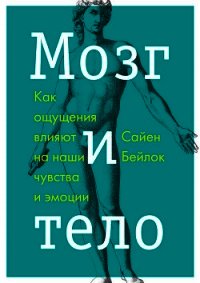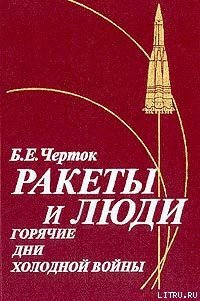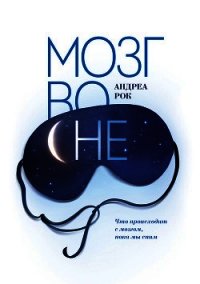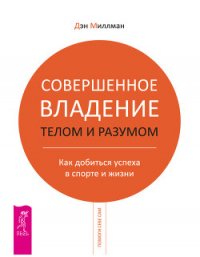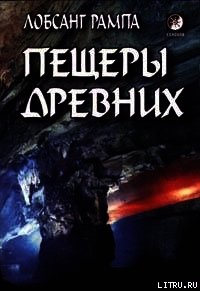Мозг рассказывает.Что делает нас людьми - Рамачандран Вилейанур С. (прочитать книгу txt) 📗
McGraw-Hill.
’Quartz, S., & Sejnowski, T. (2002). Liars, lovers and heroes. New York:
William Morrow.
Ramachandran, V. S. (1993). Behavioral and magnetoencephalographic
correlates of plasticity in the adult human brain. Proceedings ofthe National
Academy of Sciences of the USA, 90,10413-10420.
Ramachandran, V. S. (1994). Phantom limbs, neglect syndromes, repressed
mem-iories, and Freudian psychology. International Review of Neurobiology,
37,291-333.
Ramachandran, V. S. (1996, October). Decade of the brain. Symposium
organized by the School of Social Sciences, University of California, San Diego,
La Jolla.
Ramachandran, V. S. (1998). Consciousness and body image: Lessons from
phantom limbs, Capgras syndrome and pain asymbolia. Philosophical
Transactions of the Royal Society of London, Series B: Biological Sciences,
353(1377), 1851-1859.
Ramachandran, V. S. (2000, June 29). Mirror neurons and imitation as the
driving force behind “the great leap forward” in human evolution. Edge: The Third
Culture, Retrieved from http://www.edge.org/3rd_culture/ramachandran/rama chandran_ pl.html.,
pp. 1-6.
Ramachandran, V. S. (2003). The phenomenology of synaesthesia. Journal
of Consciousness Studies, 10(8), 49-57.
Ramachandran, V. S. (2004). The astonishing Francis Crick. Perception,
33(10), 1151- 1154.
Ramachandran, V. S. (2005). Plasticity and functional recovery in
neurology. Clinical Medicine, 5(4), 368-373.
Ramachandran, V. S., & Altschuler, E. L. (2009). The use of visual
feedback, in particular mirror visual feedback, in restoring brain function. Brain,
132(7), 16.
Ramachandran, V. S., Altschuler, E. L., & Hillyer, S. (1997). Mirror
agnosia. Proceedings of the Royal Society of London, Series B: Biological
Sciences, 264,645-647.
Ramachandran, V. S., & Azoulai, S. (2006). Synesthetically induced colors
evoke apparent-motion perception. Perception, 35(11), 1557-1560.
Ramachandran, V. S., & Blakeslee, S. (1998). Phantoms in the brain. New
York: William Morrow.
Ramachandran, V. S., & Brang, D. (2008). Tactile-emotion synesthesia.
Neurocase, 14(5), 390-399.
Ramachandran, V. S., & Brang, D. (2009). Sensations evoked in patients
with amputation from watching an individual whose corresponding intact limb is
being touched. Archives of Neurology, 66(10), 1281-1284.
Ramachandran, V. S., Brang, D., & McGeoch, P. D. (2009). Size reduction
using Mirror Visual Feedback (MVF) reduces phantom pain. Neurocase, 15(5),
357-360.
Ramachandran, V. S., & Hirstein, W. (1998). The perception of phantom
limbs. The D. O. Hebb lecture. Brain, 121(9), 1603-1630.
Ramachandran, V. S., Hirstein, W., Armel, К. C., Tecoma, E., & Iragul, V.
(1997, October 25-30). The neural basis of religious experience. Paper presented at
the 27th annual meeting of the Society for Neuroscience, New Orleans, LA.
Ramachandran, V. S., & Hubbard, E. M. (2001a). Psychophysical
investigations into the neural basis of synaesthesia. Proceedings of the Royal
Society of London, Series B: Biological Sciences, 268(1470), 979-983.
Ramachandran, V. S., & Hubbard, E. M. (2001b). Synaesthesia: A window
into perception, thought and languag t. Journal of Consciousness Studies, 8(12), 3-
34.
Ramachandran, V. S., & Hubbard, E. M. (2002a). Synesthetic colors support
symmetry perception and apparent motion. Abstracts of the Psychonomic Society’s
43rd Annual Meeting, 7,79.
Ramachandran, V. S., & Hubbard, E. M. (2002b, November). Synesthetic
colors support symmetry perception and apparent motion. Poster session presented
at the 43rd annual meeting of the Psychonomic Society, Kansas City, MO.
Ramachandran, V. S., & Hubbard, E. M. (2003). Hearing colors, tasting
shapes. Scientific American, 288(5), 42-49.
Ramachandran, V. S., & Hubbard, E. M. (2005a). The emergence of the
human mind: Some clues from synesthesia. In L. C. Robertson & N. Sagiv (Eds.),
Synesthesia: Perspectives from cognitive neuroscience (pp. 147-190). New York:
Oxford University Press.
Ramachandran, V. S., & Hubbard, E. M. (2005b). Synesthesia: What does it
tell us about the emergence of qualia, metaphor, abstract thought, and language? In
J. L. van Hemmen & T. J. Sejnowski (Eds.), 23problems in systems neuroscience.
Oxford, UK: Oxford University Press.
Ramachandran, V. S., & Hubbard, E. M. (2006, October). Hearing colors,
tasting shapes. Secrets of the senses [Special issue]. Scientific American, 76-83.
Ramachandran, V. S., & McGeoch, P. D. (2007). Occurrence of phantom
genitalia after gender reassignment surgery. Medical Hypotheses, 69(5), 1001-
1003.
Ramachandran, V. S., McGeoch, P. D., & Brang, D. (2008).
Apotemnophilia: A neurological disorder with somatotopic alterations in SCR and
MEG activation. Paper presented at the annual meeting of the Society for
Neuroscience, Washington, DC.
Ramachandran, V. S., & Oberman, L. M. (2006a, May 13). Autism: The
search for Steven. New Scientist, pp. 48-50.
Ramachandran, V. S., & Oberman, L. M. (2006b, November). Broken
mirrors: A theory of autism. Scientific American, 295(5), 62-69.
Ramachandran, V. S., & Rogers-Ramachandran, D. (2008). Sensations
referred to a patient’s phantom arm from another subjects intact arm: Perceptual
correlates of mirror neurons. Medical Hypotheses, 70(6), 1233-1234.
Ramachandran, V. S., Rogers-Ramachandran, D., & Cobb, S. (1995).
Touching the phantom limb. Nature, У71, 489-490.
‘Restak, R. (2000). Mysteries of the mind. Washington, DC: National
Geographic Society.
Rizzolatti, G., Sc Arbib, M. A. (1998). Language within our grasp. Trends in
Neurosciences, 21,188-194.
Rizzolatti, G., & Destro, М. E (2008). Mirror neurons. Scholarpedia, 3(1),
2055.
Rizzolatti, G„ Fadiga, L., Fogassi, L„ & Gallese, V. (1996). Premotor cortex
and the recognition of motor actions. Cognitive Brain Research, 3,131-141.
Rizzolatti, G., Fogassi, L., & Gallese, V. (2001). Neurophysiological
mechanisms underlying the understanding and imitation of action. Nature Reviews
Neuroscience,
2,
661-670.
Ro, Т., Fame, A., Johnson, R. М., Wedeen, V., Chu, Z., Wang, Z. J., et al.
(2007). Feeling sounds after a thalamic lesion. Annals of Neurology, 62(5), 433-
441.
‘Robertson, I. (2001). Mind sculpture. New York: Bantam Books.
Robertson, L. C., & Sagiv, N. (2005). Synesthesia: Perspectives from cognitive
neuroscience. New York: Oxford University Press.
’Rock, I., & Victor, J. (1964). Vision and touch: An experimentally created
conflict between the two senses. Science, 143, 594-596.
Rosen, B., & Lundborg, G. (2005). Training with a mirror in rehabilitation
of the hand. Scandinavian Journal of Plastic and Reconstructive Surgery and
Hand Surgery, 39(104-108).
Rouw, R., & Scholte, H. S. (2007). Increased structural connectivity in
grapheme-color synesthesia. Nature Neuroscience, 10(6), 792-797.
